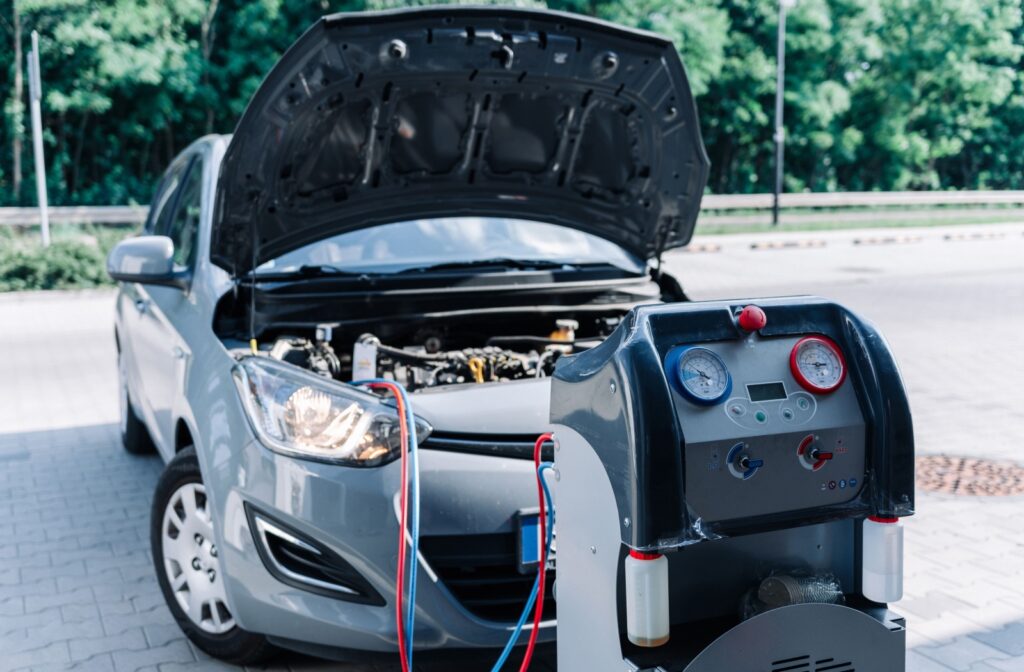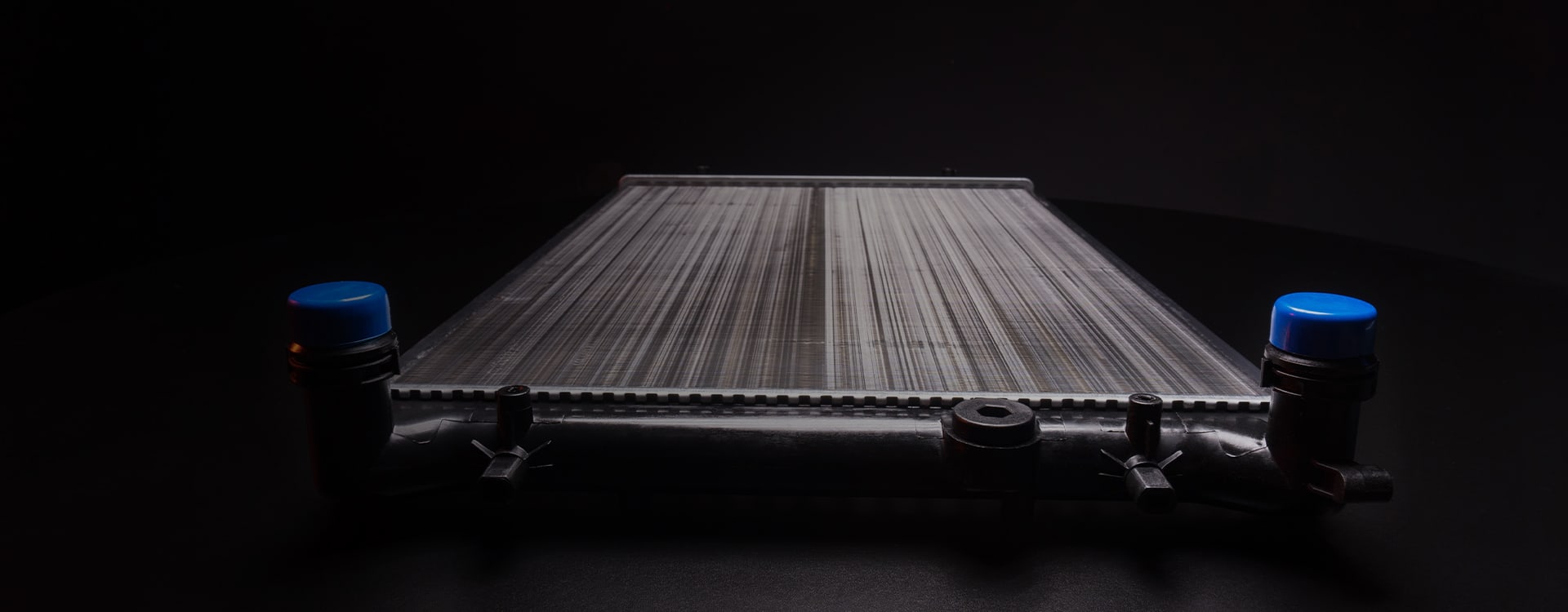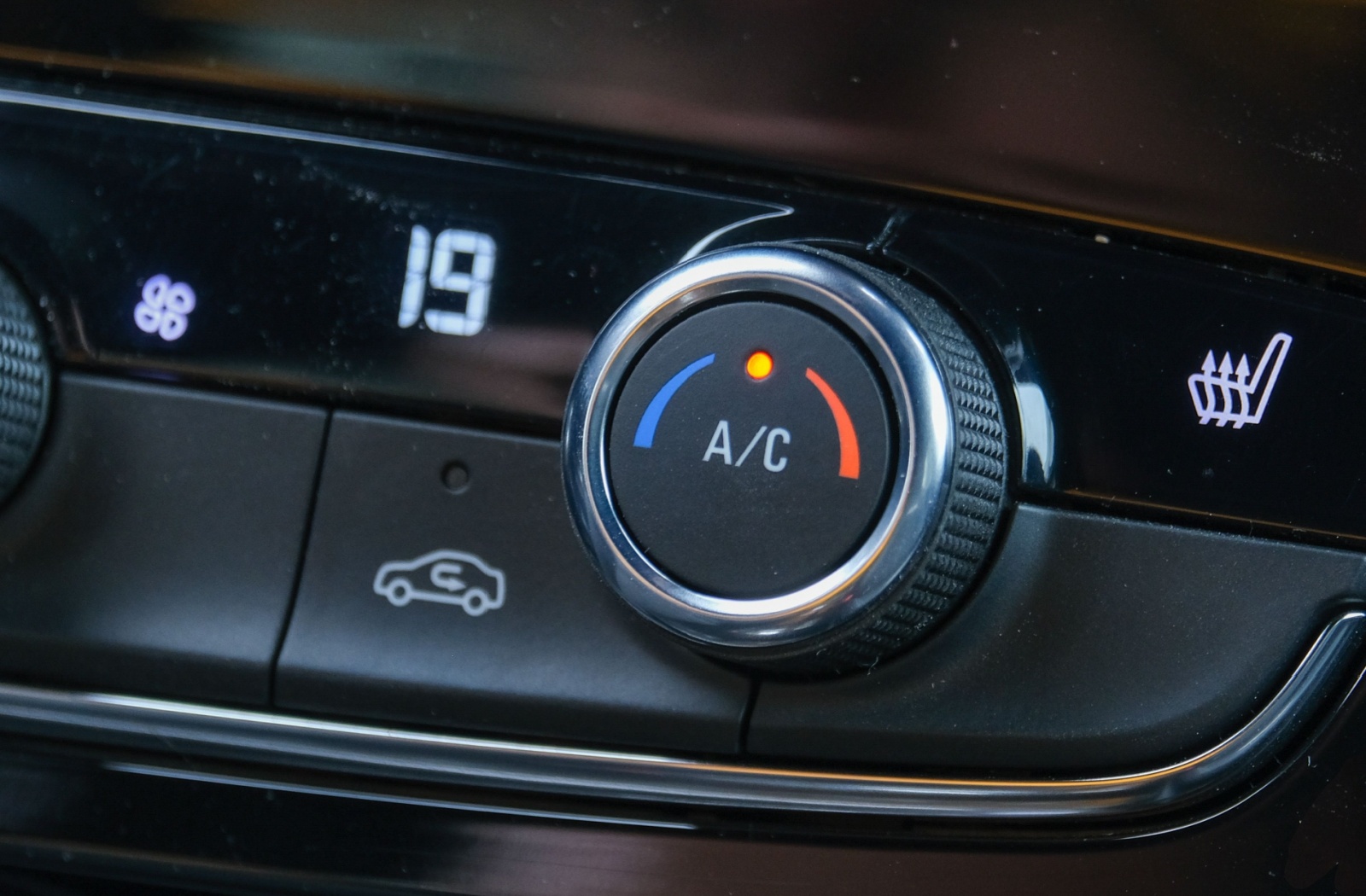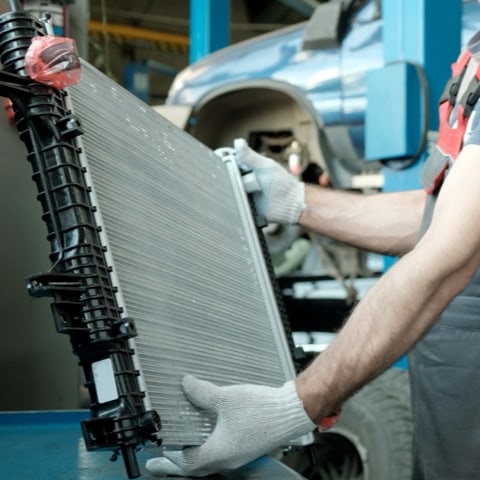Nothing ruins a hot summer drive like warm air blowing from your vents when you expect cool relief. AC leaks are one of the most common reasons your car’s air conditioning stops working properly, and they can happen to any vehicle regardless of age or make. Understanding common AC system problems can help you identify issues early and maintain your vehicle’s cooling performance.
You can check for AC leaks by looking for puddles under your car, oily residue around AC components, and performance issues like weak airflow or warm air from vents. While some minor issues can be addressed at home, most AC leak repairs require professional automotive cooling system repair to ensure safe and lasting results.
Common Signs Your Car’s AC System Has a Leak
Your vehicle gives you clear warning signs when the AC system develops a leak. Recognizing these early symptoms can help you address problems before they become expensive repairs.
Physical Signs You Can Spot
Start by checking the area where you regularly park your car. Look for these visible clues that point to AC system problems:
- Puddles or stains under your parked car
- Oily residue around AC components
- Frost buildup on AC lines
- Visible damage to hoses or connections
Performance Issues That Signal Problems
Your AC system’s performance tells the story of what’s happening inside. Pay attention to these changes in how your system operates:
- Warm air blowing from vents
- Weak airflow even on high settings
- AC takes longer to cool down your car
- Strange noises when AC runs
How to Check for AC Leaks in Your Vehicle
You can perform several basic checks before calling for professional auto air conditioning service. These simple steps help you understand the scope of the problem and communicate effectively with repair technicians.
Visual Inspection Steps
Pop your hood and look at the AC components you can easily see. Check the hoses, connections, and fittings for obvious signs of damage or moisture. Look for any green, yellow, or clear fluid around these areas as this could indicate refrigerant leaks.
Simple Tools You Can Use at Home
A flashlight helps you see into darker areas of the engine bay where leaks might hide. You can also use a clean rag to wipe suspected leak areas, then check back after running the AC for signs of new fluid buildup. Some automotive stores sell UV leak detection kits, but these require adding dye to your system.
When to Call Professional Auto Air Conditioning Service
Stop your DIY inspection if you smell sweet or chemical odours, see significant fluid leaks, or notice any electrical components that appear wet or damaged. Professional technicians have specialized equipment to safely locate refrigerant leaks and perform proper repairs without exposing you to harmful chemicals.

Types of AC Leaks & Where They Happen
Understanding where leaks commonly occur helps you focus your inspection efforts. Different types of leaks require different repair approaches and have varying levels of complexity.
Refrigerant Line Leaks
The metal lines carrying refrigerant throughout your vehicle can develop small holes from road debris or corrosion. These leaks often appear as oily spots where the lines connect to other components. Refrigerant line damage typically requires professional automotive cooling system repair because replacement involves specialized tools and proper refrigerant handling.
Evaporator & Condenser Issues
Your evaporator sits inside the dashboard, making leaks hard to spot directly. You might notice a sweet smell inside the car or foggy windows that don’t clear easily. The condenser, located in front of your radiator, can be damaged by road debris and typically shows visible signs of impact or corrosion when leaking. Understanding how to protect radiators from damage can help prevent similar issues with your condenser.
Connection Point Problems
Fittings and connection points experience constant pressure changes that can loosen seals over time. These areas often leak slowly at first, creating small puddles or stains under your parked car. Connection leaks might be repairable with new seals, depending on the specific location and extent of damage.
DIY Fixes You Can Try Safely
Some AC leak issues can be addressed with basic tools and careful attention to safety. However, you should never attempt to open refrigerant lines or handle refrigerant directly without proper training and equipment.
Minor Seal Repairs
AC stop-leak products available at auto parts stores can help with very small leaks in seals and gaskets. These products work by circulating through your system and sealing minor gaps from the inside. Keep in mind that stop-leak is a temporary solution — you’ll likely need proper repairs eventually.
Tightening Loose Connections
If you notice loose fittings or connections, you can carefully tighten them with appropriate tools. Don’t over-tighten, as this can damage threads or crack components. Make small adjustments and test your system to see if the leak stops.
When DIY Isn’t the Right Choice
Avoid DIY repairs if your leak involves major components like the evaporator, condenser, or compressor. Never attempt to add refrigerant yourself unless you have proper certification and equipment. Large leaks, electrical component damage, or any situation requiring system evacuation should be handled by professionals who specialize in car AC repair.
Professional Car AC Repair Solutions
Professional repair shops have the tools, training, and certification needed to properly diagnose and fix AC leaks. They can also ensure your repairs meet environmental regulations for refrigerant handling.
Automotive Cooling System Repair Process
Professional technicians start with pressure testing to locate exact leak points. They’ll evacuate the refrigerant safely, replace damaged components, and test all seals before refilling the system. This process ensures your repair lasts and your AC performs like new.
Vehicle AC Recharge Services
After fixing leaks, your system needs proper refrigerant levels to function correctly. Professional vehicle AC recharge services include evacuating old refrigerant, checking for contaminants, and adding the exact amount of fresh refrigerant your system requires. They’ll also add lubricants that keep your compressor running smoothly.
Complete System Replacement Options
Severely damaged systems might need major component replacement. Professional shops can replace evaporators, condensers, compressors, or entire refrigerant line sets when repairs aren’t cost-effective. They’ll also upgrade older systems to use more environmentally friendly refrigerants when appropriate.
AC leaks don’t have to leave you sweltering through another summer. With proper diagnosis and professional repair, you can get back to enjoying cool, comfortable drives. City Wide Radiator offers comprehensive car AC repair and vehicle AC recharge services to keep your cooling system running reliably year-round.Contact our experienced technicians today to schedule your AC system inspection and get back to comfortable driving in any weather.











